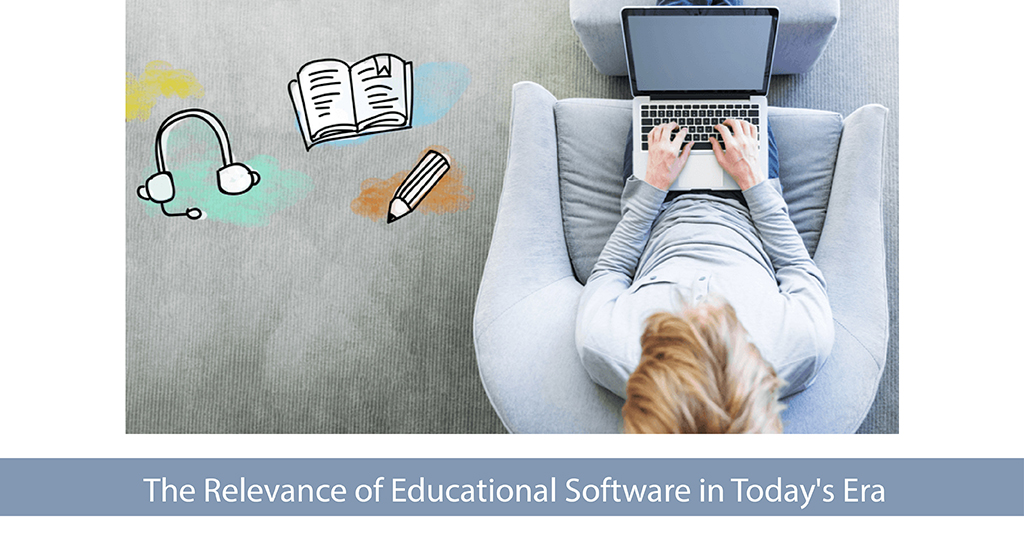Educational software is computer software designed for educational purposes, ranging from language learning and classroom management to reference tools. Such software aims to enhance the effectiveness and efficiency of various aspects of education.
What is educational software sexactly?
Educational software has a rich history dating back to the 1940s, and it has evolved into a tool that helps students learn and improve their skills in various subjects. It is used in different educational settings, offering greater accessibility, flexibility, and personalized learning experiences. Educational softwares is a valuable tool for achieving academic goals and is used for various tasks in schools, colleges, universities, corporate training, and tertiary education. Parents can also use it to monitor their children’s progress.
Types of Educational Software Platforms
Educational softwares has evolved to cater to different aspects of learning and teaching. Courseware, classroom aids, assessment software, reference software, and custom platforms are some educational software categories available today.
- Courseware refers to software that packages an entire course or class, including lessons, tests, and additional material.
- Classroom aids, such as SMART Boards, are designed to assist in teaching in school classrooms.
- Assessment software is used for assessing and testing students in a virtual environment.
- Reference software includes encyclopedias and dictionaries, often supplemented with multimedia content.
- Custom platforms are designed for younger children, combining hardware and software into a single product.
- Gamification– Gamification uses game design elements to motivate behavior change in non-game contexts. A framework links game elements with a motivational model, aiding designers who want to incorporate gamification into educational software. Some educational software also uses gamification techniques to make learning more engaging and enjoyable for students.
- Corporate training and tertiary education – Corporate and tertiary education software used to be on desktops but switched to server-based apps with standardization after 2000. Educational software now runs on servers and is distributed online. Government endorsements and approval systems facilitated the change, and McDonald’s even tried it with the eCrew Development Program on Nintendo DS. Corporate training and tertiary education include Educational technology, SCORM, Virtual learning environment, Learning Management System (LMS), Training Management System (TMS), and Web-based training.
These different categories of educational software offer a range of solutions to educators and students, helping to enhance the learning experience.
The following is a list of globally used educational software:
- MilGrasp
MilGrasp is a cloud-based software designed specifically for educational institutes, available on all three platforms – WEB, ANDROID, and IOS. MilGrasp provides essential features for educational institutes, such as student data management, attendance tracking, notice distribution, and push notifications. It suits schools, colleges, hostels, preschools, and coaching institutes and can help streamline their operations. With MilGrasp, admins, teachers, parents, and students can easily access all the necessary information with just one click.
- QualCampus
QualCampus is a comprehensive Education ERP for schools, colleges, and universities. Trusted by over 400 institutions worldwide, it offers 70+ modules, including Enquiries, Admissions, Examinations, Library, Management, Financial Accounting, and Payroll. It comes in different versions, including University, College, and School ERP, and is used by over 430 educational setups globally.
- Complete ERP
This ERP solution provides comprehensive management features for both schools and colleges, covering everything from inquiries to fee management, library and attendance tracking, timetable scheduling, certificate generation, ID card printing, reminder letters, demand register, SMS features, birthday reminders, and stock and finance & accounting management. The software is designed to meet the needs of any educational institution and comes with live chat support to ensure that prompt assistance is always available from the ANDI team.
Several vendors are offering new educational software products for sale
- Microsoft– Microsoft 365 and Teams are developed for education, seamlessly integrating conversations, assessments, apps, and content into a secure hub that streamlines class management and fosters student engagement.
- Oracle– the Oracle Cloud Infrastructure (OCI), Oracle Fusion Cloud Applications, and Oracle Student Cloud, schools can improve their business processes, make the most of their resources, and provide enhanced support to staff and students.
- PowerSchool – PowerSchool, part of Group LLC, has over 14,000 customers in 90+ countries, serving over 45 million students globally, with a strong presence in North America. Their solutions are used daily by educators, students, administrators, and parents.
Effects and Uses of Educational Software
- The use of educational software has been a subject of study for many years, and research has shown that it can positively impact students’ learning outcomes, particularly in improving their understanding of the material and reducing the amount of time needed to study.
- Additionally, educational software benefits children with disabilities, helping them develop social skills and engage in team-based learning.
- To evaluate the effectiveness of educational software, a team has developed a comprehensive evaluation system called CEELTES, which grades software on technical, educational, and psychological criteria.
- Furthermore, educational software has been proposed as a tool to teach complex subjects such as first-order logic in higher education. As technology advances, educational software will likely play an increasingly important role in education at all levels.
- Educational Software for First-Order Logic Semantics: Educational software is helpful in introductory logic courses where students may struggle with formalisms and complexities of first-order logic semantics. To facilitate the teaching and learning of first-order logic semantics, two tools, namely FOLST and LogicChess, have been developed. These instructive, visual, and interactive tools allow users to experiment with first-order logic formulas. They are implemented in C++ and released under a free software license.
- Educational Software in the Life Sciences: Educational software in life sciences provides interactive learning experiences for students. Programs range from virtual dissection software to molecular modeling tools, helping students understand complex biological concepts. These tools provide in-depth understanding, safe exploration, and immediate feedback to reinforce learning. As technology advances, educational softwares in life sciences continues to expand, offering new and exciting ways for students to engage with the material.
Educational softwares faces several challenges that impact its effectiveness and adoption. Some of these challenges include:
- Technical Issues: Educational softwares must be designed to work across different platforms and devices, which can lead to technical issues such as bugs, glitches, and compatibility problems. These issues can be frustrating for students and teachers and impact the software’s usability.
- Content Creation: Creating engaging and effective educational content is time-consuming and challenging. The content must be relevant, accurate, and aligned with the curriculum. Educational softwares must also keep pace with updates and changes in the subject matter.
- Usability: Educational softwares should be user-friendly, easy to navigate, and accessible to a diverse range of learners. It should be able to adapt to the student’s different learning styles and abilities. The software must also be able to monitor and track progress to provide personalized feedback.
- Cost: The cost of educational softwares can be a significant barrier to adoption, especially for schools and students with limited resources. The software must be affordable, and its value must justify the expense.
- Integration with Existing Systems: Educational softwares must be integrated into the existing educational system to provide a seamless experience for both students and teachers. This integration can be challenging and requires collaboration with school administrators and IT teams.
Educational softwares must be designed to overcome these challenges to provide students with a practical and engaging learning experience.
In conclusion, educational softwares has become integral to modern education, providing various solutions to educators and students. Educational softwares has shown positive effects on student learning outcomes and has been beneficial for students with disabilities. With technological advancements, educational software will likely play an increasingly important role in education at all levels. As more educational softwares is developed and introduced into the market, it is important to continue evaluating its effectiveness and suitability for different educational settings.






